Once again, I am in the middle of an Impossible Mission, and I need the support of all sides. Maybe in this time, that other “impossible things” are happening, we may be able to manifest this too.
Please, whoever is in charge of communications, send this appeal to all the list to see if some of you have the leads, clues, keys, to make this “dream” possible now….It is urgent, so…Gracias, arigato, and my love to you all!!! Siempre, Coyote Alberto
PROJECT: CREATING A TEMPORARY MODEL PEACE-ECOVILLAGE at the World Social Forum DE BRAZIL-2009
Dear friends, brothers and sisters, road companions:
Greetings from the Brazilian northeast!
As you may know, the Rainbow Peace Caravan which I created in 1996 and led for the last thirteen years has been in Brazil these last three years, doing its socio-eco-educational work in partnership primarily with the Brazilian Ministry of Culture.
As emissaries from Another Possible World, we have planted seeds of change along the way, in 17 countries, in hundreds of communities, touching the hearts and minds of thousands of people from the most diverse ethnic, economic, and cultural backgrounds. This work has initiated many projects, networks and movements, which you can read about at the conclusion of this letter.
Besides innumerable workshops, artistic events, lectures, articles, and documentaries, the Caravan has won great respect in South America with the organization of small, medium and large bioregional, national and international events. These events have brought together representatives from the whole spectrum of socio-political, educational, environmental and indigenous organizations from as many as 35 different countries at a time. (Please refer to the conclusion of this letter for a comprehensive list.
We were also responsible for hosting and organizing two ENA(Ecovillage Network of the Americas) annual regional representatives meetings in South America. One in the Natural Reserve Sasardi, Colombia in 2000, the second in Oyantaitambo, Peru; and one GEN (Global Ecovillage Network)general meeting, also in Oyantaitambo-Peru, both in 2005.
For thirteen years I have dedicated all of my time, energy and resources to these projects, and as I reached last september my 63rd anniversary, I have to decide if I want to spend the rest of my years on the road, with the Caravan, or if it is time to begin contemplating another, more suitable project for the next chapter of my life.
You all know me, and therefore also know that my priority in life has been my mission, and that I have put aside my health, wealth and security, leaving my beautiful community in Huehuecoyotl and dearest blood family, in order to follow the vision and the paths upon which my heart has led me.
In all these last 13 years, I was personally funded for only three years by an Ashoka Fellowship (2002-2005); and recently by a small grant from Gaia Trust, for the investigation of the book I am currently working on dealing with rescuing the disperse History of the Communitarian Movements from Brazil: 1500-2008).
In addition, the former Minister of Culture of Brazil, Gilberto Gil, funded our NGO Caravana Arcoiris, for a 12 month project, visiting, interacting, keeping an audiovisual recording and writing a book on this exceptional experience throughout 10 Brazilian states. The project was a huge success and we won a national prize as a Living School, and were selected with the highest notes for a new 12 month project, which, due to the difficulties of the bureaucratic administrative process in this country and the recent change of Minister, has been kept on standby for almost two years now, surviving with several small projects with local Majors and Secretaries of Culture and education here and there.
In the years past, we received small punctual grants from GEN, ENA and the educational office from the State Department from the US, which were applied to specific one month projects in Colombia, Ecuador and Peru. Besides that, we have survived mostly thanks to the cooperation of the communities that received us in exchange for our work, from donations from a few generous friends, from the cultural activities we sold to local cultural, municipal and educational organizations, from trade, from magic hats, from faith and providence.
During these years, neither myself, no
r any other members of the Caravan received a salary. We all did it as a service and voluntarily for the Earth and for the people. Only when we were funded by the Ministry of Culture in Brazil did the Caravan members receive a monthly compensation of $150 US for our personal expenses.
So, where does that leave us now?
We have a very big project ahead, and we need your support! We have the opportunity to participate in the upcoming World Social Forum in January 2009, located in northeast Brazil, in Belem-Para, at the mouth of the Amazon River. Our intention is to dedicate all of our energy and resources, from now on, to get there at least one month before the event, and create a model temporary Peace ECO-Village. This space will receive thousands of people, mostly young activists from the entire planet, which will come, attracted as never before, to this historical event.
WE NEED FUNDING!!!
We are obviously aware that the actual Economical Global Crisis could be an impediment for donations, but it can also be a challenge, a lesson that we cannot let pass, to prove that we believe and have the means and disposition to create Another Possible World.
If you can personally afford so send a donation, it will make our purpose more feasible, and we will be thankful to your gesture. If you cannot, you may have leads to other people, institutions, $social enterprises, organizations, and may become a local founder for this project. And we will be again, very thankful to you.
How much and for what?
1-Fixing of our vehicles in order to move from here (Recife-Pernambuco), to Belem (Par)
2-Fuel for our six vehicles,(two buses, one truck, two trailers and one light vehicle), to cover a distance of approximately 1,750 miles each and in Belem for production (1,500 miles)
3-Provisions for a permanent crew of 25 people from mid December to mid February
4-Production money to set-up the infrastructure of the Peace ECO-Village
5-Provisions for an extra crew of 75 people from January 15th to February 7th. (Volunteers are needed to mount the Village, run the event and for dismounting and cleaning afterwards)
1- Item $ 7.000,00 US
2- Item $ 6.000,00 US
3- Item $ 7.000,00 US
4- Item $ 10.000,00 US
5- Item $ 10,000,00 US
TOTAL. Approximately: $40,000.00 US
What would be the purpose to fund such a project?
First of all, the WSF is the largest world event focusing on the presentation of possible models for a sustainable and alternative planet. It is mostly a forum of ideas, proposals, panels, and round tables, with information concerning web-sites, blogs, documentaries, photos, and the production of ar
tistic events.
How do we put into practice all of these visions?
The temporary peace Eco-Village we will set in Belem will create a physical-visible model where those proposals can be directly experienced. A cooperative effort where activists, from all over Brazil, Latin America, the US, Europe and the rest of the Planet can come and give a hand, to learn, to share their knowledge and to manifest our collective dream.
We do not plan to have a stand on ecovillages, permaculture, bioregionalism or other subjects common to us all; we plan TO BE a place where those ideas can be actually lived. That is our main purpose in La Caravana: a Living School. Yes, we will also have information, show films, do workshops and presentations, but the focus will be on how to do things in collaboration, integrating the physical, social, artistic, and spiritual aspects of being human on this diverse and sacred planet.
(Below you will find links to more information.)
Thank you for your interest and patience, many blessings to you all. We look forward to hearing from you soon, and to meet all of you who may be able to come to Belem to share this unforgettable experience.
There are always things that would help us better accomplish our goals. If you have any of the things on this list and no longer have a use for them or something that you feel we could benefit from having please consider making a donation to our community. To make an offer, write to [email protected]. Thanks!
- Books in Spanish with ecological or political themes
- Boxes — ideally used plastic that are sturdy and good for traveling on rooftops
- Bus drivers
- Compact fluorescent light bulbs
- Digital video camera
- Dry erase markers
- Healthy food (organic grains, nutritional yeast, locally grown fruits, veggies, herbs, etc.)
- Laptop computer w/ modem, firewire, and the capacity to edit audio y video
- Mead zipper binders
- Theater lights
- Tools of every variety, including bike tools, sewing equipment, and power tools
- VHS VCR (NTSC)
- Water ozonator
Always, Alberto Ruz
For personal donations and/or money orders, PLEASE ONLY from physical person to person (Please confirm if you send one):
Roque Alberto Ruz Buenfil
Banco do Brasil
Account: # 37.922-0
Agency: 1835-X CAXANGA, Recife, Pernambuco-Brazil
For grants, fundings from Foundations, organizations, institutions, etc:
(Please confirm if you send one with date, amount and swift #)
ODIN GOVINDA RUZ HANSBERG
BBVA-BANCOMER
Agency Number: 5653 Tepoztlan Centro,
Morelos-MEXICO
Account # 0155229979
Unique key of interbank transference ( CLABE )
#:012277001552299794.
SWIFT: BCMRMXMMPYM
Odin Ruz
Permacultura en accion
(52) 01739-3955011
Alberto Ruz Buenfil
[email protected]
style="font-size:100%;">http://caravanaarcoiris.blogspot.com/
http://www.lacaravana.org
Tel:(55) 81-8641-6734
Site from the WSF: http://www.forumsocialmundial.org.br
Blog from the WSF: http://www.fsm2009amazonia.org.br
Blog actualized from the WSF : http://belemjaneiro2008.blogspot.com
Blog from the Caravana: http://caravanaarcoiris.blogspod.com
Site (in re-construction) http://www.lacaravana.org
In Spanish also in: http://www.megavideo.com/?v=PIBNGUBM
(Recommended to watch the documentary People from the Earth-Gente de la Tierra, (in Spanish) on the event organized by the Caravan Chamado do Beija Florâ de Brazil), directed by the Argentinean Nicolas Dyszel.
http://www.youtube.com/watch?V=cOnSAAmEZ14
To get copies from the documentaries: “World Bridgers”: 10 years traveling with the Caravana Arcoris por la Paz, and “The Call of the Condor
Site from the most recent bioregional Council in South America (October 2008)- El Llamado del Espino, to held in a temporary Peace Village in Chile:
http://www.llamadodelespino.cl
Projects initiated in cooperation with La Caravana ArcoIris
The Colombian Ecovillages Network, integrating the North Andean Network (Colombia, Ecuador and Venezuela) that will be having their coming Bioregional Council in La Atlantida Ecovillage, in January 2009, led by former caravanistas Jorge Calero and Beatriz Arjona
http://www.aldeafeliz.org
The Amazonian Bioregional Council, led by a former member from the Caravan, founder of the ecovillage Abra144, and actually focalizer from ENA in Brazil, Vanessa Mario:
http://ena.ecovillage.org/mailman/listinfo/ecovilasbrasil_ena.ecovillage.org)
The project Weimure-Ecovillage -Sustainable Center in El Pauji, Great Savanna, in Venezuela, led by Manuel Mateus and a group of people that took their first ecovillage and permacultural training with the Caravana in 1998.
http://www.elpauji.com
http://www.venezuela.solarquest.com/elpauji
http://www.thelostworld.org/elpauji/paujifot.htm
ECO-Chile, the Arcoiris networkthat was formed by a group of people that was part of the Caravan during our long stay in Chile, and has just organized its first Vision Council for a Bioregional Action in the month of October 2008 in the central bioregion of that country,
http://www.llamadodelespino.cl
Gatherings, or Peace Villages (Aldeas de Paz)organized and co-organized by the Caravan: *Mexico (1st Bioregional Council from the Americas-Meztitla, 1996);
*First bioregional gathering & ecovillage training in Great Savanna & El Pauji, Venezuela, 1998;
*First bioregional gathering of the Colombian Ecovillages Network, in Titiribi-Medellin, 2000
*The first Women’s Leadership Peace Village in Ecuador, 2002;
*The first Continental Vision Council for Bioregional Action, (Call of the Condor) in Peru, 2003
*The first bioregional Vision Council in Santiago de Chile (Llamado del Arcoiris), in 2004
*The Olinda Peace Village for the Traditional Cultural Points of the state of Pernambuco, Brazil, 2008.
[email protected]
http://caravanaarcoiris.blogspot.com/
http://www.lacaravana.org
Tel:(55) 81-8641-6734
 Criteria: Concept of right livelihood or socially useful work. Durable and well-made items.
Criteria: Concept of right livelihood or socially useful work. Durable and well-made items. 
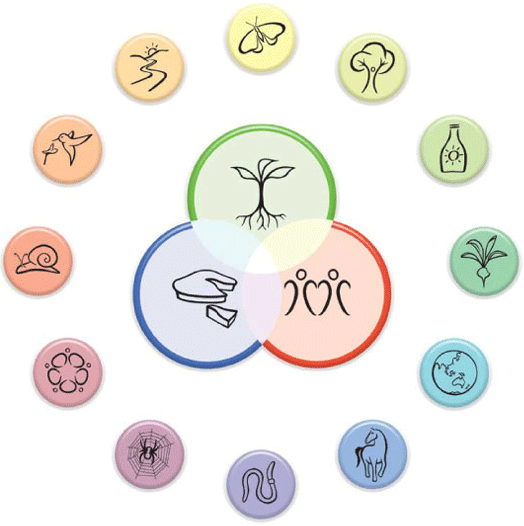
 Developing ways of creating sound investments to finance permaculture developments and the businesses that supply them would serve to spread the adoption of permaculture techniques. The more opportunities locally, or through decentralized networks, the easier it will be for people to withdraw their retirement savings from destructive systems.
Developing ways of creating sound investments to finance permaculture developments and the businesses that supply them would serve to spread the adoption of permaculture techniques. The more opportunities locally, or through decentralized networks, the easier it will be for people to withdraw their retirement savings from destructive systems.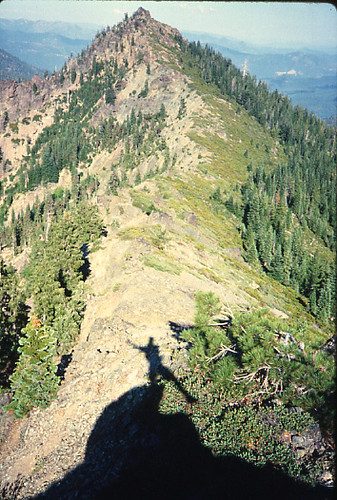

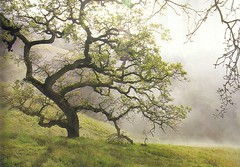
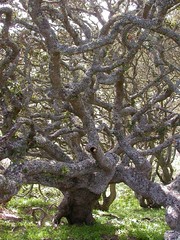
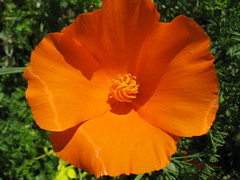
 “I highly recommend
esign.org/courses-events/the-ecology-of-leadership">Ecology of Leadership. The curriculum is indispensable for folks interested in working for world healing and transformation. The course taught me a powerful technology for leading from within. It stretched me past longstanding limitations. The practices I learned in the course will stick with me for life. EOL helped me to take more responsibility, to do it effectively and make positive change in nearly every area of my life. The course facilitators are especially insightful, and supportive. In addition, I made new, close friends who now serve as trusted allies in my growth. I regained a sense of connection with Nature in the course as a source of inspiration and guidance. Best of all, my clarity of purpose and creativity for projects I hope to do in my community has expanded. I am more effective as a friend, teacher and counselor, and a lot happier in myself. I would do the course all over again! ” - Michelle Nemer, Health Counselor
“I highly recommend
esign.org/courses-events/the-ecology-of-leadership">Ecology of Leadership. The curriculum is indispensable for folks interested in working for world healing and transformation. The course taught me a powerful technology for leading from within. It stretched me past longstanding limitations. The practices I learned in the course will stick with me for life. EOL helped me to take more responsibility, to do it effectively and make positive change in nearly every area of my life. The course facilitators are especially insightful, and supportive. In addition, I made new, close friends who now serve as trusted allies in my growth. I regained a sense of connection with Nature in the course as a source of inspiration and guidance. Best of all, my clarity of purpose and creativity for projects I hope to do in my community has expanded. I am more effective as a friend, teacher and counselor, and a lot happier in myself. I would do the course all over again! ” - Michelle Nemer, Health Counselor